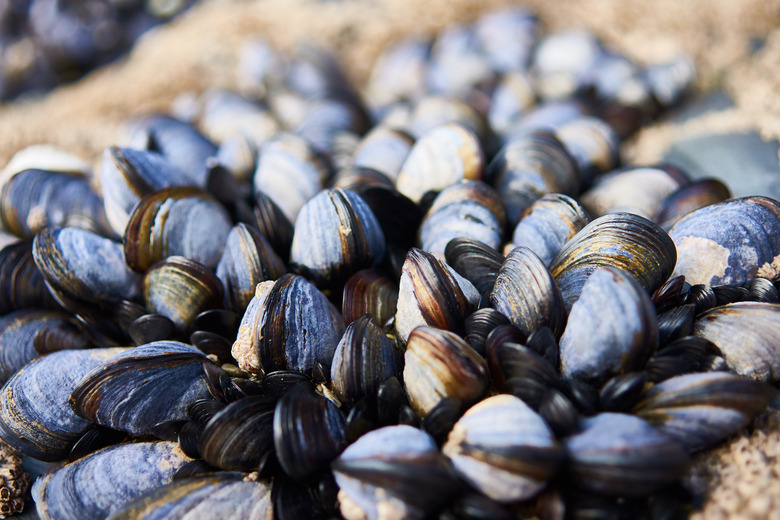What Eats Mussels?
When talking about mussels, you're actually referring to the common name for a number of different species. While many families and species fall under the umbrella term of "mussels," they are all bivalve mollusks that fall into three distinct subclasses: marine mussels (Pteriomorphia), freshwater mussels (Palaeoheterodonta) and zebra mussels (Heterodonta).
All mussels are filter feeders that eat plankton (a.k.a. algae). This makes them a primary consumer and an important part of the ecological food chain. Mussels are eaten by a wide variety of predators, including humans.
What Are Mussels?
What Are Mussels?
"Mussels" is a common name for a number of bivalve mollusk species. They are aquatic organisms that can survive in both fresh and saltwater (depending on the species). Freshwater mussels are also sometimes called clams.
Marine mussels can be found all over the world in almost every ocean, although they do prefer cooler, shallow waters. Freshwater mussels are estimated to have over 1,000 species with organisms found in ponds, lakes, streams and rivers.
Mussel Anatomy
Mussel Anatomy
Mussel anatomy begins with the mussel's outer shell. The term bivalve indicates that the external shell of the organism is split into two halves, or valves. These two halves are connected by a hinge ligament. This hinge can open and close the shell of the mussel via muscles on the inside of the shell.
The shell provides protection for the mussel as the outer layer is made from strong and durable calcium carbonate. The other two layers of the shell provide support for the mussel's inner tissues.
Inside the shell is the main "part" of the mussel shared with almost all other bivalves: the "foot." This isn't a foot like a person's foot; it refers to the strong inner muscular organ that the mussel uses to move and attach itself to rocks/objects to remain sessile (immobile). This is also where mussel anatomy differs between marine and freshwater mussels. Freshwater mussels usually have a larger foot compared to marine mussels.
It also has what's called an incurrent siphon that allows it to pull water into its shell, filter it for food and push out the remaining "waste" water.
Life of a Mussel
Life of a Mussel
Mussels are filter feeders that are often found in cool and shallow waters. They attach themselves to solid and stable areas (usually rocks, docks, boats and other stable aquatic structures) and allow water to wash over them in order to filter feed. They'll often form in great clusters/clumps all together with hundreds of mussels on one rock.
Other mussels like to bury themselves beneath sand, mud, wood and sunken objects underwater. They'll then use their "foot" to drag themselves along the mud, sand and silt in order to filter feed.
Mussels Predators
Mussels Predators
Because of their proximity to shore and sometimes exposure to the air as tides go in and out, one of the biggest mussels predators are birds. Various species of gulls, ducks, geese and other aquatic birds are their main predators. Some birds will dive under the water to grab buried mussels and crack them open with their powerful beaks.
Sea stars (starfish) also commonly eat mussels. They use their many "arms" to scoop the mussels out from under the sand and swallow them whole, extract the "meat" and spit out the shell. Sea snails have a bit of a different method: they'll make a tiny hole in the mussel's shell and "suck" the meat out.
Mammals like otters and sea lions also eat muscles, and humans are also some of the top predators for mussels. To get to the meat, people usually steam or boil the mussel until the shell cracks open, and then they scoop out the meat.
Cite This Article
MLA
Walsh, Elliot. "What Eats Mussels?" sciencing.com, https://www.sciencing.com/what-eats-mussels-4964157/. 22 November 2019.
APA
Walsh, Elliot. (2019, November 22). What Eats Mussels?. sciencing.com. Retrieved from https://www.sciencing.com/what-eats-mussels-4964157/
Chicago
Walsh, Elliot. What Eats Mussels? last modified March 24, 2022. https://www.sciencing.com/what-eats-mussels-4964157/
